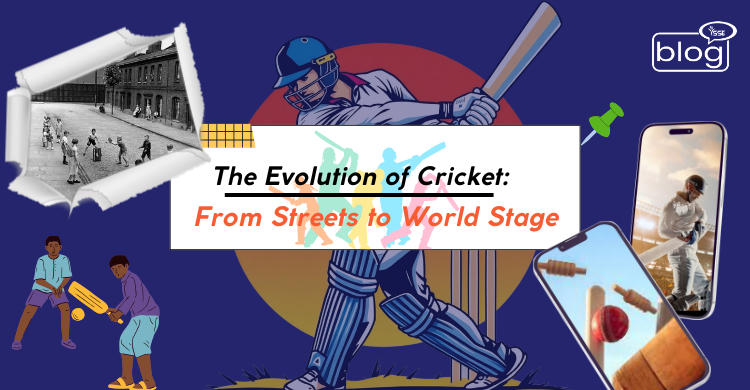Cricket is one of the most popular sports in the world. But it didn’t start this way at first. Its journey started funnily. Several kids played on the village grounds in a sport watched by millions worldwide. It is truly amazing and exciting. Let’s take a look at how cricket has changed day by day.
How It All Started
Cricket first started in England in the 1500s. At first, it was a game played by several children. Slowly, adults also started enjoying it. In the 1700s, Cricket became a popular game in England. In 1787, the MCG Club was formed. The club wrote down different official rules of cricket, which made Cricket more organized and stronger.
Cricket Travels the World
After the spread of the British Empire around the world, they also expanded cricket with them. Soon, people in other countries started playing Cricket too. In these countries, it has become more than a game. For example, in a country like India, it became a way for people to prove their capability.
In 1844, the first international match happened between the USA and Canada. But the real beginning of international Cricket was in 1877 when England played their first official Test match against Australia. As a result, one of the biggest rivalries in world cricket was formed.
Street Cricket: Where Dreams Begin
Stadiums are built to host International matches. But on the streets, cricket was also happening in a much easier way. In different cities like Mumbai, Karachi, and Dhaka, kids started to play cricket in narrow streets, empty lots, or wherever they could play. They used wooden sticks as bats and followed their own modified rules.
This different version of cricket is often called “gully cricket” or “street cricket”. Because of this unique version, many famous cricketers fell in love with Cricket. It’s fun, cheap, and creative. Many aspects of modern cricket have originated from this kind of informal play.
The Game Changes: One-Day and T20 Cricket
Before, Test matches were the greatest form of cricket. But in the 1970s, a new type called the One-Day cricket format became very popular. Every team played a limited number of overs, and the whole match surprisingly ended in one day. This was helpful for fans who didn’t watch cricket for a long time.
Later, in the 2000s, another version of the format called T20 cricket was introduced. These versions are even faster. It is fast, exciting, and full of action. In 2008, one of the greatest T20 leagues, the IPL, started, and it changed the view of cricket forever. It filled sports with entertainment, and players from all over the world came to play.
Now, many countries are hosting different T20 leagues. And they made cricket more fun and more famous.
Technology and Media Make Cricket Bigger
Over the years, technology has played an important role in the growth of cricket. First, radio and television came. But with time different kinds of technology came forward. Now, fans can easily watch every match on their phones from anywhere. Special technology tools like the DRS, slow-motion cameras, and ball-tracking made cricket more interesting.
And most importantly, Social media made cricket stars more popular. Fans can follow their favorite players and gather updates easily. They can also join online discussions. Cricket is now not only a sport but also a massive part of digital life.
Cricket Today: A Global Game
Nowadays, cricket is played in over 100 countries. Big tournaments like the Cricket World Cup, T20 World Cup, and the World Test Championship bring millions of fans together.
New cricket teams from different countries are getting stronger day by day through their efforts. Women’s cricket is also growing fast.
Conclusion
With time, Cricket has come a long way. From quiet village fields and noisy city streets to big stadiums and global tournaments, it has truly become a great sport for everyone. It shows us that with hard work, anyone can go from playing Cricket in the streets to becoming a rising star on the world stage.
To read more blogs like this, click here.
Writer,
Sajida Jesmin Tuli
Intern, Content Writing Department
YSSE

